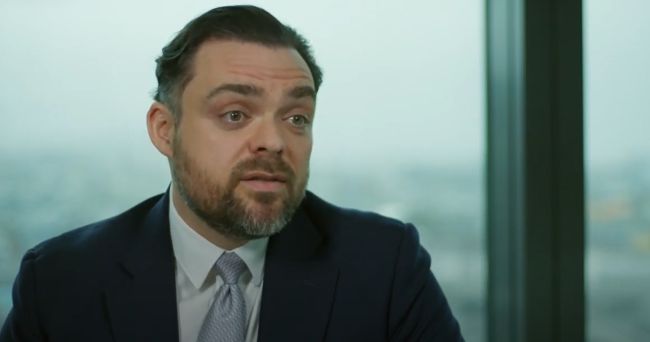The numbers are sobering: GAM’s assets shriveled to 100 billion Swiss francs ($108 billion) at the end of last year, as clients pulled 4.4 billion francs from a flagship investment arm and a major client at its white-label fund unit took approximately 20 billion francs elsewhere. It is a staggering, sad comedown for the Swiss asset manager, founded by Gilbert de Botton 39 years ago with the backing of Jacob Rothschild.
Four years after it was forced to reveal that a fund manager had dipped big into now-defunct Greensill, GAM continues to struggle with its recovery under CEO Peter Sanderson. The former Blackrock executive has recruited several former associates from his time with the U.S. behemoth since joining GAM in 2019. On Wednesday, Sanderson slashed GAM’s profit target in half, while keeping a compensation ratio pledge in place.
Leaning On Fabled Heritage
“Although we are yet to achieve the financial results we believe are possible, I believe we are in an excellent position to deliver for our clients and grow our business in the new paradigm which is emerging from the pandemic,” Sanderson said. He cited more investor appetite for actively-managed investments, which include prominent portfolio manager Paul McNamara’s emerging market fund. “This plays to our strengths of delivering results beyond the ordinary, by thinking beyond the obvious,” Sanderson said, in a nod to its fabled heritage.
Sanderson took over one year after the Greensill scandal at GAM’s flagship bond fund run by Tim Haywood burst into the open. A whistleblower raised alarm internally, leading eventually to the company shutting the fund, sacking Haywood (the whistleblower was also let go, separately, due to spending cuts), and returning the remaining fund money to its investors. Two months ago, GAM paid £9.1 million ($12.3 million) to settle the matter with the U.K.‘s Financial Conduct Authority.
The good news is that Sanderson is progressing on cost-cutting targets, following a fourth annual net loss. The bad is that GAM is still spending far too much considering how much of its assets it manages in-house: more than half of its actively-managed investments are done through two long-term partners, Altanticomnium and Fermat.
It isn’t clear whether the departure of a big white-label client last year is an isolated incident, or the beginning of a wider trend out the door. The white-label business – where GAM manufactures a product for an institutional client to sell under its own brand name – manages more than two-thirds of GAM’s overall 100 billion francs in assets, but accounts for less than 16 percent of fees and commissions.
Lopsided Margins, Fees
The real money is in active investments like McNamara’s or a luxury fund overseen by veteran Swetha Ramachandran: this arm’s average fee margin of 51.3 basis points last year towers over the white-label business’ four points. It also lays bare that Sanderson will probably be forced to make more cuts: the company’s staff count of 605 people at year-end is unsustainable for GAM’s size, assets, and (lack of) profitability.
It isn’t clear whether Sanderson can make a go of new initiatives into wealth management, ESG, and private markets – all fiercely competitive areas. In recent months, more staff including Darren Nicholls, U.K risk chief; Ireland boss Ray Cullivan; and distribution veteran Daniel Durrer have moved on.
The sum total for investors is disheartening: GAM shares have shed 92 percent of their value in the last four years. It hasn’t paid a dividend since 2017, though it targets a minimum payout ratio of half of underlying profits. The question is whether GAM can hold onto the lucrative type of clients it needs long enough, until it returns to sustainable profits.


